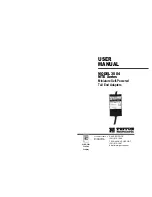
Fabric OS 6.2 administrator guide 359
4.
Log in to the backbone fabric and set up the TI zone.
a.
Enter the following commands to create and display a TI zone:
BB_DCX_1:admin>
zone --create -t ti TI_Zone1 -p "1,9; 1,1; 2,4; 2,7;
10:00:00:00:00:08:00:00; 10:00:00:00:00:02:00:00;
10:00:00:00:00:03:00:00"
BB_DCX_1:admin>
zone --show
Defined TI zone configuration:
TI Zone Name: TI_Zone1
Port List: 1,9; 1,1; 2,4; 2,7; 10:00:00:00:00:08:00:00;
10:00:00:00:00:02:00:00; 10:00:00:00:00:03:00:00
Status: Activated Failover: Enabled
b.
Enter the following commands to reactivate your current effective configuration and enforce the TI
zones.
BB_DCX_1:admin>
cfgactvshow
Effective configuration:
cfg:
cfg_TI
zone:
lsan_t_i_TI_Zone1
10:00:00:00:00:00:02:00:00
10:00:00:00:00:00:03:00:00
10:00:00:00:00:00:08:00:00
BB_DCX_1:admin>
cfgenable cfg_TI
You are about to enable a new zoning configuration.
This action will replace the old zoning configuration with the
current configuration selected.
If the update includes changes to one or more traffic isolation zones, the
update may result in localized disruption to traffic on ports associated
with the traffic isolation zone changes
Do you want to enable 'cfg_TI' configuration (yes, y, no, n): [no]
y
zone config "cfg_TI" is in effect
Updating flash ...
QoS: Ingress Rate Limiting
Ingress rate limiting is a licensed feature that requires the Adaptive Networking license. Ingress rate
limiting restricts the speed of traffic from a particular device to the switch port. Use ingress rate limiting for
the following situations:
•
To reduce existing congestion in the network or proactively avoid congestion.
•
To enable you to offer flexible bandwidth limit services based on requirements.
•
To enable more important devices to use the network bandwidth during specific services, such as
network backup.
To limit the traffic, set the maximum speed at which the traffic can flow through a particular F_Port or
FL_Port. For example, if you set the rate limit at 4 Gb/s, traffic from a particular device is limited to a
maximum of 4 Gb/s.
Ingress rate limiting enforcement is needed only if the port can run at a speed higher than the rate limit. For
example, if the rate limit is 4 Gb/s and the port is only a 2 Gb/s port, ingress rate limiting is not enforced.
The ingress rate limiting configuration is persistent across reboots.
Summary of Contents for A7533A - Brocade 4Gb SAN Switch Base
Page 1: ...HP StorageWorks Fabric OS 6 2 administrator guide Part number 5697 0016 Edition May 2009 ...
Page 24: ...24 ...
Page 99: ...Fabric OS 6 2 administrator guide 99 ...
Page 100: ...100 Managing user accounts ...
Page 118: ...116 Configuring standard security features ...
Page 164: ...162 Configuring advanced security features ...
Page 234: ...232 Installing and maintaining firmware ...
Page 268: ...266 Administering advanced zoning ...
Page 284: ...282 Configuring Enterprise class platforms ...
Page 292: ...290 Routing traffic ...
Page 294: ...292 Interoperability for merged SANs ...
Page 302: ...300 Configuring the Distributed Management Server ...
Page 334: ...332 iSCSI gateway service ...
Page 340: ...338 Administering NPIV ...
Page 407: ...Fabric OS 6 2 administrator guide 405 ...
Page 408: ...406 Using the FC FC routing service ...
Page 438: ...434 Administering extended fabrics ...
Page 460: ...456 Administering ISL trunking ...
Page 516: ...512 FICON fabrics ...
Page 526: ...522 Configuring and monitoring FICON Extension Services ...
Page 540: ...536 Configuring the PID format ...
Page 544: ...540 Understanding legacy password behavior ...
Page 546: ...542 Mixed fabric configurations for non merge SANs ...
Page 550: ...546 Migrating from an MP Router to a 400 MP Router ...
Page 558: ...554 Inband Management ...
Page 572: ...568 ...
















































